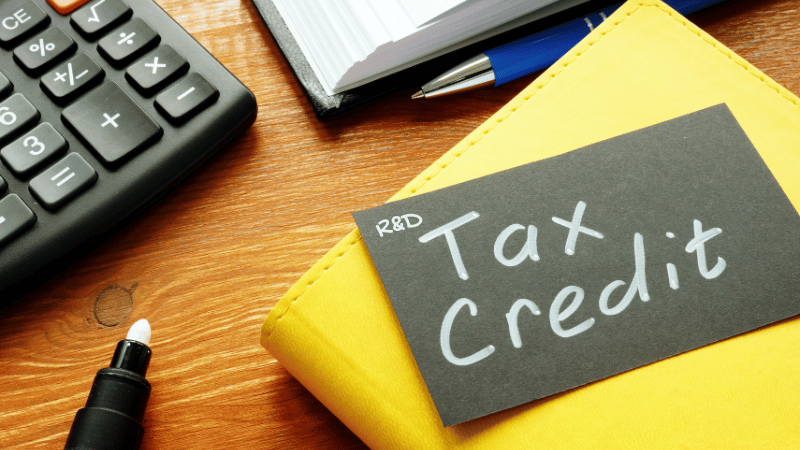R&D Tax Credit Qualified Activities: What Counts for Your Business

Research and Development Tax Credit (R&D Tax Credit) is a federal tax benefit that provides companies with dollar-for-dollar cash savings for qualified research expenses. However, there is some confusion about what counts as qualified expenses for R&D Tax Credit.
Many people think you’d have to wear a lab coat and use test tubes to qualify for R&D Tax Credits. In reality, R&D’s definition for tax purposes is pretty broad. That’s why eligible companies should understand what counts as qualified research expenses as mandated by the IRS.
We’ll explore this topic in greater depth to help eligible companies maximize their R&D tax credit.
What are R&D Tax Credit Qualified Activities?

In general, activities to develop or improve processes, products, software, formulas, techniques, or inventions in a way that requires some technical experimental level to determine the most accurate design may qualify for the R&D tax credit.
Three activities qualify for R&D tax credits, namely:
- Wages of any staff directly supporting or supervising R&D activities and engaging in qualified research.
- Supply costs or expenses involved in experimentation, including raw materials or prototype development.
- Expenses connected with outside services used during the development process.
According to the IRS, the wages that qualify for this tax credit constitute in-house research expenses only to the extent the wages were paid or incurred for “qualified services” performed by the employee. This includes all taxable wages as reported on Form W-2, including bonuses and stock option redemptions.
For context, the term ‘engaging in qualified research’ refers to the actual conduct of qualified research, such as a scientist conducting laboratory experiments.
Meanwhile, the IRS defines supply expense as the costs of any tangible property other than land or improvements to land and property of a character subject to the allowance for depreciation. Contract research expenses refer to 65 percent of any expense paid or incurred in carrying on a trade or business to any person other than an employee of the taxpayer for the performance on behalf of the taxpayer of qualified research or services.
List of R&D Tax Credit Qualified Activities
Since the IRS’s definition of qualified activities is pretty broad, it is vital to clarify what is considered qualified research activities. Here are some excellent examples of what may pass the IRS’s scrutiny:
- Beta testing
- CAD or 3D Modeling
- Compiling research data
- Creating more efficient and environmentally friendly designs
- Developing and experimenting with formulations
- Developing software (application, mobile app, bridging functionality, etc.) to sell, lease, or license to a customer
- Developing or engineering a new or improved product, process, formula, or software
- Developing engineering architecture
- Developing experimental models & prototypes
- Developing or improving a technical process
- Developing software to help facilitate a service or to bridge or interface between outside parties (B2B or B2C) or internally within multiple systems
- Developing something patentable
- Documenting the results of the research
- Evaluating alternatives to existing products or processes
- Assessing the feasibility of a product, process, formula, or software
- Experimenting with new technologies
- Fabricating experimental models
- Improving existing product functionality, quality, reliability, or performance
- Improving existing techniques
- Improving processes or the manufacturability of a product
- Maintaining research equipment
- Participating in technical meetings
- Paying outside consultants to conduct any of the above activities
- Researching solutions intended to reduce time-to-market for a product
- Supervising technical personnel engaged in R&D
- Technical design reviews
- Testing an experimental product, process, formula, or software
The Four-Part Test for Determining R&D Eligibility
The IRS usually conducts a four-part test to determine if an activity is considered a qualified research expense. These are the four items companies need to consider when determining what counts as qualified activities:
1. Permitted Purpose
Does the activity lead to creating or improving a product, process, or software? This activity must improve a process or product’s function, reliability, performance, and quality.
2. Technological in Nature
Is the activity technological in nature? The activity should be science-based, and the development of the business component must be based on hard science, such as engineering, physics, chemistry, or the life, biological, or computer sciences.
3. Elimination of Uncertainty
Is there room for improvement or development in this product or process? The company must have faced technological uncertainty at the activity’s outset related to the appropriate design of the business component or its capability or development method.
4. Process of Experimentation
Was the process experimental in nature? Experimentation is needed. Testing and analysis must be done because of the uncertainty.
What activities don’t qualify for the R&D tax credit?
There are exceptions to research activities under the R&D tax credit. Here are some examples companies should take note of:
- Any activities or research conducted outside of the United States
- Any activities that can be considered quality control or routine maintenance
- Polls or surveys
- Reverse engineering or a duplication of any existing product or process
- Social and economic research activities
How to Calculate the R&D Tax Credit?

Companies can generally explore two methods to calculate this tax credit: the regular research credit (RRC) method or the alternative simplified credit (ASC) method.
The RRC method allows a credit of 20% of a company’s current year qualified research expenses (QREs) over a base amount. This process can be complicated because they must calculate the average annual gross R&D receipts over the prior four tax years.
Meanwhile, the ASC method looks at QREs over the previous three-year period. The ASC method permits organizations that lack the historical records necessary to document their base amount to determine their eligibility and file for the R&D tax credit.
There are four steps to follow while using the ASC method:
- Identify and calculate the average QREs for the past three years
- Multiply average QREs for those three years by 50%
- Subtract half of the three-year average (Step 2) from current year QREs
- Multiply the result of Step 3 by 14%.
How to Claim R&D Tax Credits for Qualifying Activities
Companies are required to file their taxes at the IRS. Qualified companies must file IRS Form 6765, Credit for Increasing Research Activities, for this tax benefit. This process includes identifying qualifying research activities and providing documentation proving these costs meet the Internal Revenue Code Section 41 requirements. Applicants may use business records, financial records, oral testimonies, and technical documents.
Before you complete this form, you should familiarize yourself with the instructions mandated by the IRS. The PDF version of this form is available to download at the IRS website.
In general, the IRS Form 6765, which is utilized for the R&D tax credit, has four sections:
- Section A is used to claim the regular credit and contains 11 lines of required information.
- Section B applies to the Alternative Simplified Credit or ASC.
- Section C identifies additional forms and schedules that require reporting based on one’s business structure.
- Section D only applies to qualified small businesses or QSBs making a payroll tax election.
The IRS recommends that companies calculate their credit using both regular and simplified credit methods, and then they fill out the section (A or B) that would result in the greatest tax benefit.
Next Steps
Once you determine which activities your company engages in to qualify for the R&D tax credit, you can navigate the application process more confidently. While filing for this tax claim can be complex, your company can benefit from this federal benefit.
FAQs
What are qualifying R&D activities?
Activities to develop or improve processes, products, software, formulas, techniques, or inventions in a way that requires some technical experimental level to determine the most accurate design may qualify for the R&D tax credit.
What are the four criteria for the R&D tax credit?
The R&D criteria items are permitted purpose, technological uncertainty, technological in nature and eliminate uncertainty.
How is the R&D tax credit accounted for?
The R&D tax credit is not considered taxable income. It is a below-the-line benefit and will be shown in your income statement as a Corporation Tax reduction or a credit. Eligible costs are essentially written off as expenses, so you get much of the money spent back.
What are consumables for R&D tax credits?
Consumable items, such as power, water, and fuel, are directly employed, consumed, or transformed in the R&D process.
Does the R&D tax credit incentivize research investment?
Yes, the R&D tax credit was created to encourage innovation and boost companies engaged in research by giving them more funds to hire additional employees, increase research activities, expand facilities, and many more.
How hard can a small business figure out the R&D tax credit without a consultant?
It’s challenging to file a company’s taxes independently and can lead to possible errors. Ideally, a small business should work with an accountant or expert in R&D taxes to avoid any complications.